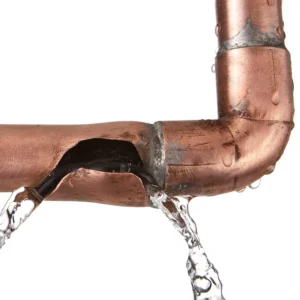How to Winterize the Plumbing in Your Texas Home?
Texas is not known for having cold winters, but February 2021 taught residents the importance of preparing for unexpected cold snaps. The plumbing is one of your home’s most vulnerable systems. It doesn’t take a rare polar vortex or state-wide power outages for freezing temperatures to damage your pipes. Even weak cold fronts can burst pipes under the right (or wrong) conditions. Prevent a disaster this year with these tips to winterize the plumbing in your Texas home.
Seal & Insulate Unconditioned Spaces
It’s common for water pipes to run through the attic, garage, unfinished basement, and other unconditioned spaces. Keep frigid air out by adding insulation, sealing air leaks with caulk and weatherstripping, closing foundation vents, and keeping the garage door closed during the winter. You can even run a space heater in unconditioned areas when cold temperatures are forecasted to keep the temperature just above freezing.
Insulate Exposed Plumbing
Pipes running along exterior walls or through unconditioned spaces are vulnerable to freezing. Help avoid this by wrapping exposed pipes with fiberglass or polyethylene insulation sleeves. You can also install heat tape under the insulation to warm the pipes and prevent freezing. Be aware that only some heat tapes are compatible with insulation, so follow the manufacturer’s instructions for your safety.
Insulate & Maintain Your Water Heater
This appliance provides hot water year-round, but it works hardest in the winter. At a minimum, you should perform a mini-flush to remove sediment from the bottom of the tank. Better yet, hire a plumber to service your water heater, install an insulation jacket, and make any necessary repairs to keep it up and running all season long.
Blow Out the Sprinkler System
The pipes inside your home aren’t the only ones at risk of freezing—cold temperatures can also affect your sprinkler system. While being buried provides some protection for sprinkler lines, they can still freeze and burst during cold spells. Hire a contractor to blow out your sprinkler system after you’ve watered your lawn for the last time until spring.
Protect Outdoor Plumbing
Pipes, hose bibs, and faucets on your home’s exterior are the most vulnerable to freezing. If they contain water when cold temperatures hit, the expanding ice could rupture these fixtures and cause extensive water damage.
An easy solution is to seal off outdoor faucets with insulated covers. A towel and duct tape work in a pinch if you can’t get to the hardware store before the next cold front hits. Still, the only surefire way to prevent freezing is to cut off the water supply and drain exterior faucets. You should also disconnect garden hoses and store them for the winter.
Let the Faucets Drip
Consider running a trickle of water from your faucets on cold nights, especially those installed on exterior walls. You only need a slow, steady drizzle to prevent pressure from building up within the pipes and causing them to burst. You might feel like you’re wasting water, but this is far cheaper than repairing a burst pipe and cleaning up the resulting water damage.
Keep the Heater Turned On
Never shut off your furnace completely, even when you leave town. Setting the thermostat no lower than 60 degrees helps prevent frozen pipes. Another effective method is to open under-sink cabinet doors in the kitchen and bathroom to allow warm air to circulate around the pipes.
Locate the Main Water Shutoff Valve
It’s wise to know where the water shutoff valve is located. This way, you can act quickly if your pipes leak or break. There is no standardized location for the water shutoff valve, but you may find it near foundation level on the front side of your house. If not, check the ground near your property line for a buried water meter box. The shutoff valve could be inside. If you can’t find your main water shutoff valve or need help operating it, call a plumber for assistance.
Turn Off the Water When You Leave Town
You can always shut off the water to individual fixtures and appliances, but the safest bet is to turn the main shutoff valve before leaving town. After doing so, open a few faucets to drain the pipes. This way, you don’t have to worry about frozen or burst pipes when you get home.
Request Winterizing Services in Houston
As winter approaches, it’s wise to perform the winterization essentials outlined above. Contact Redfin Plumbing for help! Our comprehensive plumbing services aim to prevent frozen and burst pipes in homes across the Greater Houston Area. Our approaches differ depending on if you’re getting your plumbing ready for colder temperatures or preparing to leave your home vacant all winter. Either way, call us at (346) 319-5342 or contact us online to schedule winterizing services in your Texas home. We proudly serve Houston, Cypress, Katy, Sugarland, Pearland, the Woodlands, Kingwood, and the surrounding Greater Houston area.


